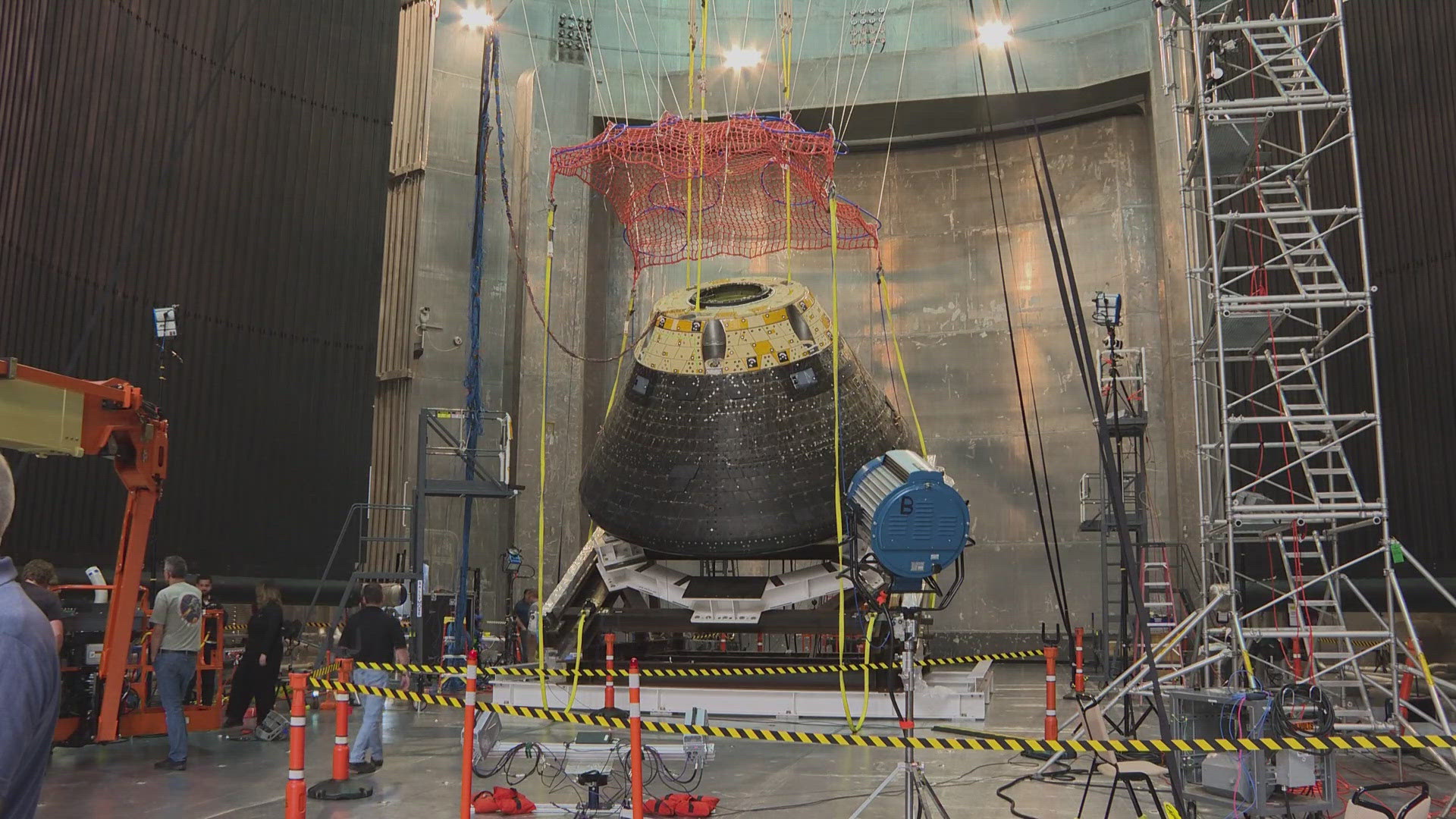SANDUSKY, Ohio — The road to the moon goes through Northeast Ohio as the Orion spacecraft from the Artemis I mission returned to NASA's Armstrong Test Facility in Sandusky. It marks an exciting milestone for the engineers.
"This thing has flown 1.4 million miles to the moon and back, so to see it here with us now in person after working in the mission every day of the mission, doing different tests on it, it's just amazing," said Carlos Garcia-Galan, European service module integration manager at NASA Glenn Research Center in Cleveland.
The tests being conducted are crucial for the safety of future astronauts. One of the key tests simulates the forces of a spacecraft's liftoff by placing it in an acoustic chamber. This massive room is filled with powerful speakers, creating an intense and deafening environment testing the spacecraft's resilience to the extreme sounds and vibrations of launch.
"I like to say the acoustic chamber is like going to multiple rock concerts at one time," Roy Overy, Orion ETA project manager at NASA Glenn, shared. "When the acoustic chamber is running and you're in the building, of course no one can be in that area, but it sounds like a couple of helicopters hovering over your building."
The Orion is now undergoing tests in the vacuum chamber. These tests ensure that the spacecraft's abort system functions properly in the event of a launch emergency.
"We feel like it was very important to have a vehicle that had gone through quite a bit of environment, had a little bit of wear and tear on it before we got into this test, because I think it gives us a very conservative test," explained Debbie Koth, NASA Orion deputy program manager.
Orion's journey began long before it reached space. In 2019, the spacecraft first landed in Mansfield, arriving aboard the NASA's Super Guppy aircraft. Since then, 3News has followed its path across Ohio, chronicling testing made possible by the Glenn Research Center helping to make Artemis I a success. Now, these new test results with further the mission.
"It has just given us incredible confidence that we have developed the safest system in the world for astronauts, to go to the moon and beyond to the future," said Paul Anderson, Orion deputy program manager at Lockheed Martin.
Although Orion has traveled millions of miles through space, its journey isn't over yet. The spacecraft will soon return to the Kennedy Space Center for final tests before being sent to the Smithsonian Museum.
"You can go there with your family someday and say that vehicle went through Sandusky, Ohio," Overy noted.
The testing will wrap up in December. The next mission, Artemis II, will take a four-person crew around the moon. It's expected to launch in September 2025.

